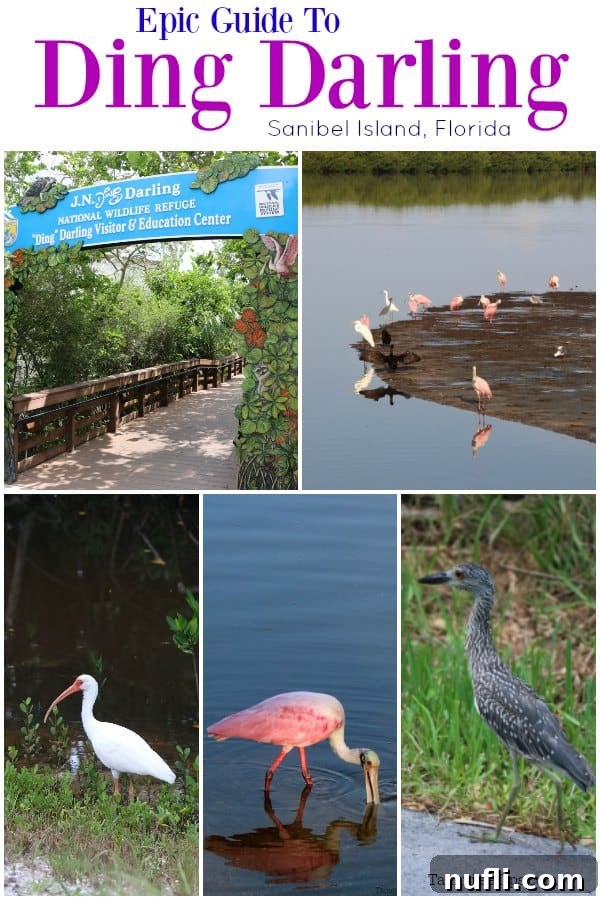Discover the Wonders of J.N. “Ding” Darling National Wildlife Refuge on Sanibel Island, Florida
Sanibel Island, Florida, is renowned for its pristine beaches, seashell treasures, and breathtaking natural beauty. Among its most cherished gems is the J.N. “Ding” Darling National Wildlife Refuge, an absolute must-visit for anyone exploring the area. Our multiple visits to this incredible refuge left us in awe, reaffirming its status as a premier destination for nature lovers, birdwatchers, and anyone seeking a profound connection with Florida’s unique ecosystem.
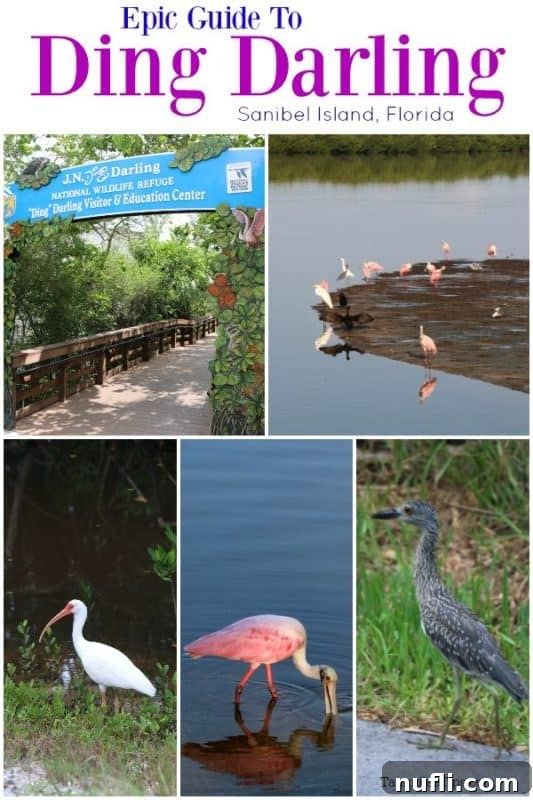
J.N. “Ding” Darling: A Sanctuary of Biodiversity
The J.N. “Ding” Darling National Wildlife Refuge is not just a park; it’s a vibrant sanctuary dedicated to preserving a vital piece of the largest undeveloped mangrove ecosystem in the United States. Established in 1945, the refuge was named after Jay Norwood Darling, a Pulitzer Prize-winning cartoonist and pioneering conservationist whose efforts were instrumental in protecting this delicate habitat. Today, it serves as a critical stopover for migratory birds, a breeding ground for countless species, and a cherished educational resource.
As you embark on the scenic Wildlife Drive, a four-mile, one-way route through the heart of the refuge, you’ll be enveloped by an unparalleled display of nature. The sheer number of birds you’ll encounter is truly astounding. It’s a surreal experience to round a corner and suddenly be greeted by a flock of bright pink Roseate Spoonbills, their striking plumage a vibrant contrast against the lush green mangroves and calm waters. These magnificent birds, often seen gracefully sifting through the shallows with their unique spoon-shaped bills, are just one of the many highlights awaiting visitors.
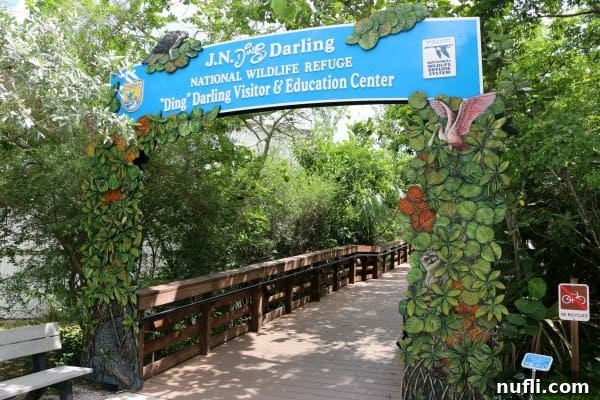
Beyond the Birds: A Diverse Ecosystem
While “Ding” Darling is famed for its avian inhabitants, the refuge is a haven for a much broader array of wildlife. Its unique blend of freshwater and saltwater areas creates diverse habitats, supporting everything from reptiles and mammals to marine life. Keep a keen eye out for American alligators basking in the sun along the waterways, or stealthy bobcats traversing the fringes of the mangroves – though these elusive creatures require patience to spot. The waters surrounding the refuge are also home to playful dolphins and gentle manatees, often sighted swimming gracefully through the estuaries. This incredible diversity makes every visit a unique adventure, with new discoveries around every bend.
The John C. “Ding” Darling Visitor & Education Center
Your journey into the refuge typically begins at the excellent Visitor & Education Center. This facility is a treasure trove of information and hands-on displays, perfect for visitors of all ages. It offers an engaging introduction to the refuge’s ecosystems, its inhabitants, and the vital conservation work being done. The exhibits are designed to be interactive and easy to understand, making complex ecological concepts accessible even to young children. You can learn about migratory patterns, the unique adaptations of local wildlife, and the importance of preserving these natural treasures.
One of our top recommendations is to connect with a park ranger, especially if Ranger Becky is on duty during your visit. We were fortunate enough to take a tour with her, and she is truly a fountain of knowledge about the refuge and its incredible wildlife. Ranger Becky’s passion for nature is infectious, and her interpretive programs and kids’ activities are exceptional. She has an uncanny ability to point out wildlife that we might have completely overlooked, enriching our experience immensely.
During our time in the educational center, we witnessed a heartwarming moment that perfectly encapsulated the impact of rangers like Becky. A former student, clearly excited, came to visit her. The child was visibly shaking with joy, eager to share stories of recent wildlife sightings and recount everything she remembered from Ranger Becky’s classroom visit. It was truly inspiring to see a child so genuinely enthusiastic about nature and engaging with a Park Ranger, a testament to the powerful seeds of environmental stewardship sown by dedicated educators.
Essential Tips for a Rewarding Visit to “Ding” Darling
To ensure your visit to J.N. “Ding” Darling National Wildlife Refuge is as enjoyable and comfortable as possible, a little preparation goes a long way. These practical tips will help you make the most of your time:
Be Prepared for Bugs
This is arguably the most crucial piece of advice: **Wear bug spray and bring it with you!** The refuge, with its proximity to water and lush vegetation, is home to mosquitoes and the notorious “no-see-um” bugs, especially in certain areas. We unfortunately forgot our bug spray one morning, and let’s just say we paid a hefty price. Don’t underestimate them! Some seasoned visitors even opt for mosquito net hats or body nets, particularly photographers who plan to stay in one spot for extended periods capturing the perfect shot. These are definitely on our must-buy list for our next trip!
Hydration, Sun Protection, and Comfort
- Stay Hydrated: The refuge does not sell bottled water on-site, so it’s essential to pack your own reusable water bottle. They do, however, offer a convenient water bottle refill station and have foldable water bottles available for purchase in the store.
- Sun Protection: Florida sun can be intense. Wear a wide-brimmed hat, sunglasses, and apply sunscreen generously to protect yourself from UV rays.
- Comfortable Footwear: While much of the refuge is experienced from your vehicle, there are walking trails. Comfortable shoes are a must for exploring on foot.
Enhance Your Wildlife Viewing
- Bring Binoculars: To truly appreciate the intricate details of the birds and other wildlife, binoculars are indispensable. They allow you to observe creatures from a respectful distance without disturbing their natural behaviors.
- Don’t Forget Your Camera: With so many incredible photo opportunities, a good camera (and perhaps a long lens for wildlife photography) is highly recommended. You can easily spend hours in a single spot, capturing stunning images of the diverse avian population.
- Visit at Optimal Times: The best times for wildlife viewing are generally early morning (just after opening) and late afternoon (before closing). This is when many animals are most active and the light is often best for photography.

The J.N. “Ding” Darling Tram Tour: An Expert-Led Adventure
For an even deeper dive into the refuge’s natural wonders, consider taking the J.N. “Ding” Darling tram tour. While we didn’t have the chance to experience it ourselves, we heard nothing but rave reviews from fellow visitors. These tours run a couple of times a day and are led by highly knowledgeable naturalists. The naturalists undergo rigorous training, ensuring they provide a rich and informative narrative throughout the journey.
The tram offers a unique perspective, allowing you to relax and soak in the scenery without the distractions of driving. Your naturalist guide will highlight specific species, explain their behaviors, and share fascinating insights into the ecosystem that you might otherwise miss. It’s an excellent option for those who prefer a guided experience, have limited mobility, or simply want to learn from an expert while enjoying the stunning views. Be sure to check the refuge’s website for current schedules and booking information, as tours can fill up quickly.
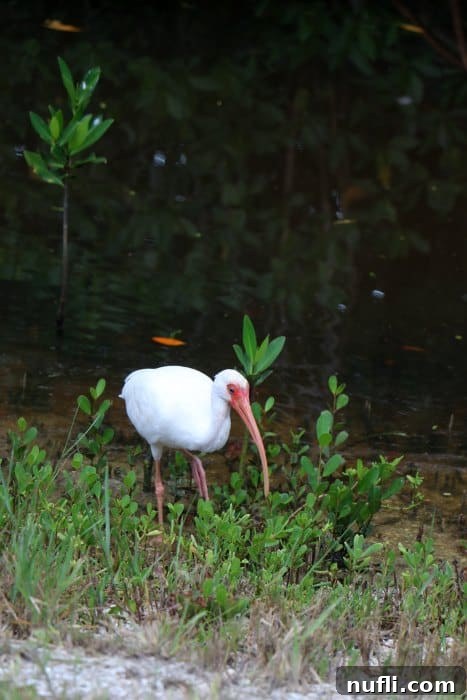
Beyond the Wildlife Drive: Walking and Paddling Trails
While the Wildlife Drive is the most popular way to explore, “Ding” Darling offers additional opportunities to get closer to nature. Several walking trails branch off from the main drive, inviting visitors to stretch their legs and experience the refuge’s quieter corners. The Indigo Trail, for example, leads to an observation tower offering panoramic views. For the adventurous, kayaking and canoeing provide a tranquil way to navigate the mangrove estuaries, offering intimate encounters with wading birds and marine life.
Connecting with “Ding” Darling Online
To plan your visit or simply learn more about this incredible conservation area, “Ding” Darling provides excellent online resources:
- Explore their official website for detailed information on hours, fees, programs, and current wildlife sightings.
- Follow their Facebook page for updates, stunning photos, and community engagement.
- Check out their YouTube channel, which features a variety of informative and engaging videos about the refuge and its wildlife.
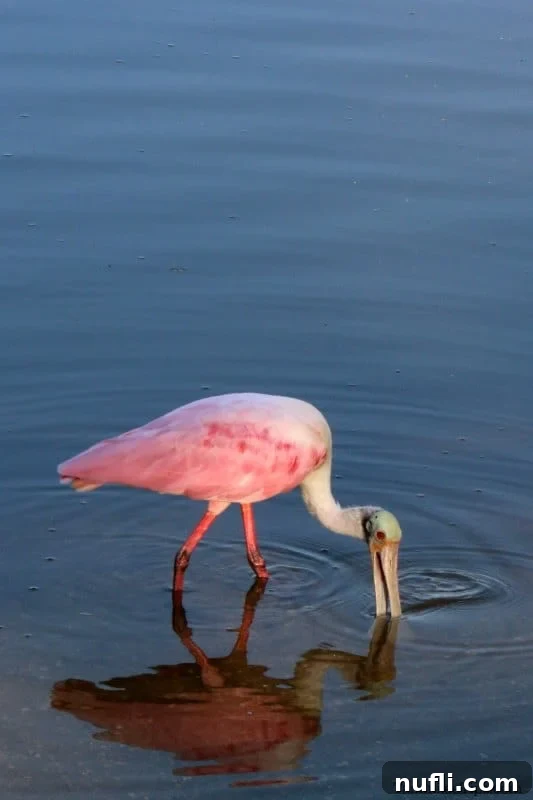
Experience Sanibel Island’s Natural Heartbeat
The J.N. “Ding” Darling National Wildlife Refuge is more than just an attraction; it’s an immersive experience that highlights the incredible beauty and fragility of Florida’s coastal ecosystems. Whether you’re a seasoned birder, a family looking for educational fun, or simply someone who appreciates the serenity of nature, a visit here promises unforgettable memories. Its dedication to conservation, coupled with its accessibility and rich biodiversity, makes it a truly special place that will leave a lasting impression on your heart.
Additional Sanibel Island Resources
To further enhance your Sanibel Island adventure, explore these helpful guides:
Top things to do on Sanibel Island
Sanibel Island Restaurant Guide
West Wind Inn Sanibel
Sanibel Island Travel Tips
Mailboxes of Sanibel Island
The Bubble Room – Captiva Island
Sanibel Dolphin and Sunset Cruise
